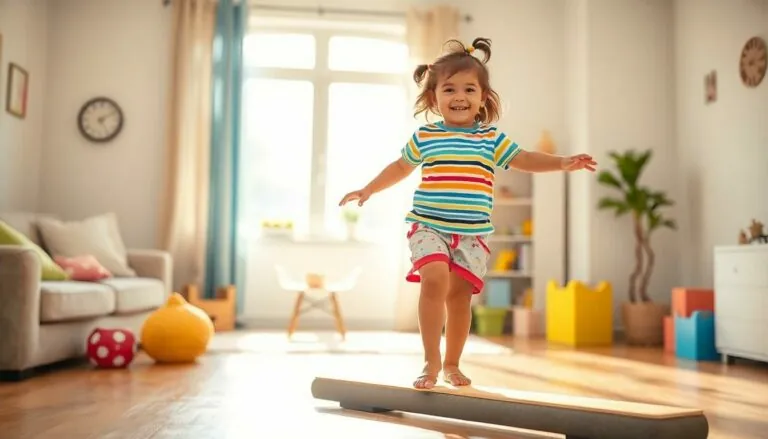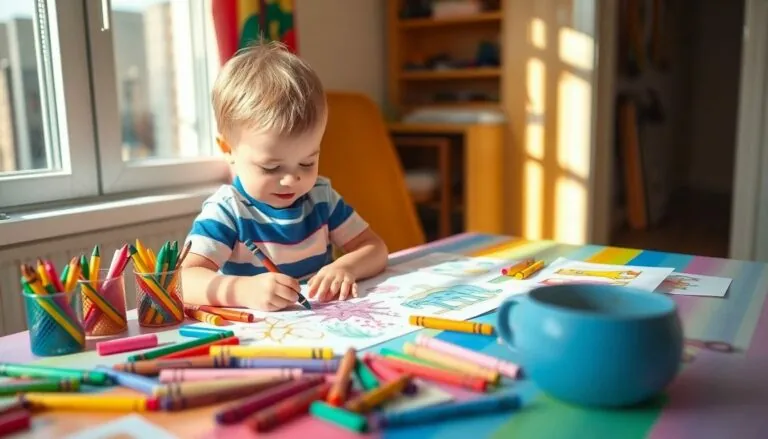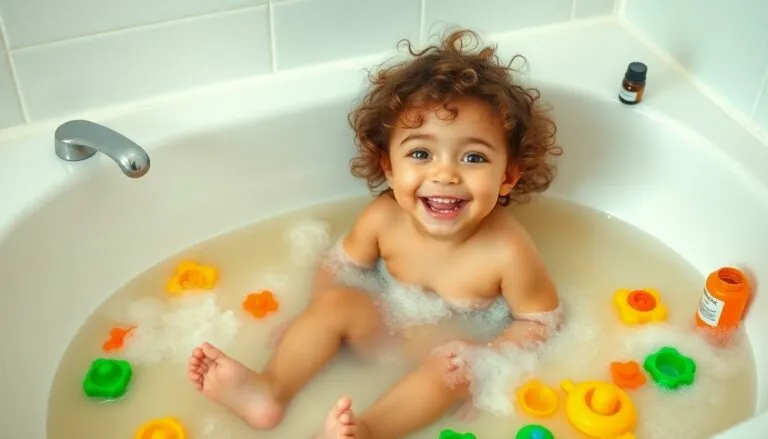Table of Contents
ToggleEvery parent knows that toddlers are like tiny, energetic acrobats who seem to defy gravity with their wild leaps and bounds. Enter the balance beam—a magical tool that transforms living rooms into Olympic arenas! Not only does it provide a safe space for little ones to channel their inner gymnast, but it also helps them develop crucial balance and coordination skills.
Overview of Balance Beams for Toddlers
Balance beams designed for toddlers provide a fun and engaging way to develop crucial physical skills. These beams help improve balance, coordination, and motor skills through active play. Constructed from soft materials, toddler balance beams ensure safety while children explore their physical capabilities.
Length and height typically vary, accommodating the needs of different age groups. Most beams range from 4 to 8 feet in length, with a height between 2 to 6 inches. Low-to-the-ground designs maintain accessibility, offering kids the chance to practice without the risk of serious falls.
Colorful designs often attract toddlers, making playtime enjoyable. Aesthetic features include bright colors and fun shapes that stimulate children’s imagination. In addition to physical benefits, balance beams encourage social interactions, as children can play together, promoting teamwork and communication.
Availability of balance beams makes them easy to find in most toy stores and online marketplaces. Various types cater to specific needs, such as foldable options for easy storage and transport. Parents can choose from beams with added features, like textured surfaces that enhance grip.
Using a balance beam contributes to a child’s overall development, combining physical activity with cognitive skills. Engaging in balance exercises supports essential brain development, promoting problem-solving abilities. Through consistent use, toddlers gain confidence in their physical skills, paving the way for future athletic endeavors.
Benefits of Using a Balance Beam
Balance beams provide numerous advantages for toddlers, focusing on both physical skills and emotional growth. Active engagement with these beams enhances coordination and balance, critical aspects of early development.
Enhancing Physical Development
Using a balance beam contributes significantly to physical growth. Toddlers engage core muscles while maintaining stability, which improves overall strength. Participating in balance exercises develops gross motor skills, allowing children to gain better control of their movements. Safety features, like soft materials and low heights, encourage exploration without fear. Variety in designs facilitates the learning process, as toddlers practice walking, jumping, and balancing. These activities promote healthy habits from an early age and lay the foundation for more advanced physical challenges.
Boosting Confidence and Coordination
Balance beams foster confidence in toddlers through play. When children successfully navigate the beam, they experience a sense of achievement, which boosts their self-esteem. Improved coordination leads to better agility in various activities, enhancing overall physical interactions. Social play on balance beams promotes teamwork, allowing children to share tips and encourage each other. Engaging with peers boosts communication skills, reinforcing relationships through shared experiences. Continuous practice not only prepares toddlers for future challenges but also instills a readiness to engage in more complex athletic endeavors later on.
Types of Balance Beams Available
Balance beams for toddlers come in various types suited to different preferences and play areas. Understanding these options helps in selecting the best one for children.
Portable vs. Stationary Beams
Portable beams offer flexibility, allowing for easy movement and setup in different locations. He or she can use these for outdoor activities or indoor exercises. Stationary beams, on the other hand, provide stability, making them ideal for consistent practice in one place. These often have a sturdier build, ensuring safety during play.
Material Options: Wood, Foam, and More
Wooden beams offer durability and a classic aesthetic, appealing to many families. Such beams provide a realistic gymnastics experience but may require extra care for safety. Foam options prioritize softness, significantly reducing injuries during falls. Other materials like PVC combine lightweight features with stability. Each material presents unique benefits, catering to specific needs and preferences in play.
Safety Considerations
Safety plays a crucial role when selecting a balance beam for toddlers. Understanding the unique needs of young children ensures a secure and fun play experience.
Age Appropriateness
Selecting the right balance beam hinges on age appropriateness. Designed specifically for toddlers, these beams typically accommodate children aged 2 to 5 years. Options include shorter beams with lower heights, such as those between 2 to 6 inches, which provide stability while minimizing fall risks. Engaging with age-appropriate beams helps toddlers build confidence at their own pace, enhancing their physical abilities without the fear of injury.
Safety Features to Look For
Prioritizing safety features is essential when choosing a balance beam. Look for beams with soft materials that cushion falls, such as foam and rubber. Base stability remains important, so wider beams offer better support for wobbly little ones. Non-slip surfaces help toddlers maintain grip as they practice balance and coordination. Beams with rounded edges reduce sharp impact risks, further ensuring safety during play. By selecting options that incorporate these safety features, parents create a secure environment for active play.
Recommendations for Buying a Balance Beam
Selecting the right balance beam involves considering several factors to enhance toddlers’ play experiences. Safety, durability, and design play crucial roles in making an informed choice.
Top Picks for Balance Beams
Popular picks for balance beams often include options like the Sumbababy 6ft Folding Balance Beam and the Gym1 Balance Beam. The Sumbababy beam stands out for its soft foam construction, ideal for beginners, while the Gym1 model emphasizes stability and versatility. These selections cater to different play styles, ensuring toddlers engage safely while developing their skills.
Budget-Friendly Options
Affordable options remain plentiful in the market. The ZUOBEI Foam Balance Beam and the GYMJOY 4ft Balance Beam are excellent examples. Both beams offer safety features like foam padding and non-slip surfaces, making them perfect for toddlers. Parents appreciate these budget-friendly picks that do not compromise safety or quality, ensuring children enjoy active play without stretching finances.
Conclusion
Balance beams for toddlers provide an engaging way to enhance physical skills while ensuring safety during play. These versatile tools not only promote balance and coordination but also foster confidence and social interactions among young children. With a variety of options available parents can easily find a balance beam that suits their child’s needs and preferences.
By incorporating balance beams into playtime toddlers can develop essential motor skills in a fun and stimulating environment. As they navigate these beams they build strength and agility that lays the groundwork for future athletic pursuits. Choosing the right balance beam is a step toward encouraging active play and healthy development in early childhood.








